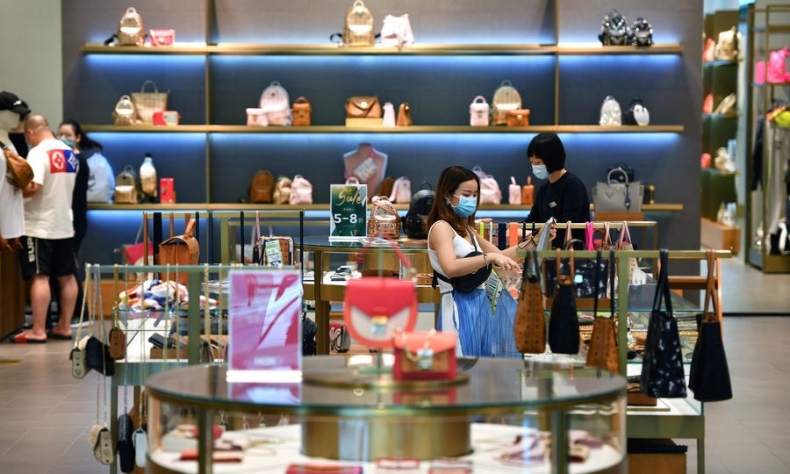A Must for Global Growth

Demand is changing, not disappearing. The products people want, where and how they want to buy them, purchase motivators, and the continued torrid growth of e-commerce and integrated retail should all be subject to review and improvement.
The Fifth China International Import Expo (CIIE) took place in Shanghai on November 5-10. The event was established in 2018 as a way to encourage and assist foreign companies to connect with and sell their products to Chinese companies, debut new products for consumers and strengthen trade between China and the world.
The establishment of the expo was the natural next step after the hundreds of successful export fairs that have been held in China over the last 25 years.
The main takeaways from the event are that China is open for business, Chinese companies want foreign industrial and consumer products, and the national goal of driving the Chinese economy through consumption is on track.
This year’s event was a reminder that, over the last three years, due to the impact of COVID-19, supply chain disruptions and global economic realities, a great many things have changed in international commerce and in the way global businesses and business people have had to interact.
In a statement released to the media in October, the U.S. China Business Council (USCBC) noted that “it’s still business, though not as usual.”
Thus, the mission of the expo made it all the more important in reestablishing a sense of normalcy and setting a roadmap for growth in international trade. The event highlighted the importance of China to the global economy as a consumer of foreign industrial, technology and consumer products.
The CIIE also sent a clear message about how important Chinese consumers are to global companies, to global economic growth and how China’s consumer economy is especially important to U.S. manufacturers, brands and new technology companies.
The USCBC noted that more than 200 U.S. companies attended the event, including 32 USCBC members, making the U.S. delegation the largest at the expo.
“As the largest delegation at the show, U.S. companies are sending a message that they have confidence in the market, that growth will continue, and government leaders will find ways to preserve the commercial side of the relationship and the millions of jobs in both countries that depend on it,” the council said.

Chinese consumers
With all the changes in the international business scene, are Chinese consumers no longer important to global brands and retailers? Is it, with the exception of only the biggest companies in the world, too hard, too expensive and too risky to win over Chinese consumers? Does the rise of local hero brands and products mean Chinese consumers are giving up on foreign brands?
The answer to all these questions is a resounding no. It would be a mistake for global companies to view current headwinds in China’s consumption as something approaching a permanent change in tastes and desires or a long-term downturn in spending.
China is, like the rest of the world, experiencing the negative economic and social effects of a pandemic, global inflationary pressure, geopolitical conflicts, and a period where major changes in technology, consumer demands, supply chains and data science are rewriting the rules and norms of retail and consumption.
Is spending down in China today? Yes, it is, and it’s a problem that is plaguing retailers, e-commerce giants and brands around the world as consumer spending dips in Europe, North America, and the rest of Asia.
The last few weeks have seen the valuations of major U.S. tech and commerce companies such as Meta, Apple, Microsoft, Netflix and Alphabet all go down significantly.
We have also seen a drop in the valuations of many legacy retailers and brands around the world, including many luxury companies.
Is Chinese consumer sentiment as strong as we are accustomed to it being during the “shopping period” that starts in October, peaks during the November 11 Shopping Festival initiated by China’s e-commerce giant Alibaba and runs through the December 12 and Chinese New Year events? No.
The bottom line is that spending and consumer sentiment are down almost universally and inflation and uncertainty about the future are on the minds of almost all global consumers and the companies that make and sell them everything from footwear to couches to TVs.

Long-term strategies
As always, the strategy for and commitment to China must be long-term and companies need to be patient, stay flexible and understand that the country is still the second-largest consumer market in the world and is still maturing.
In 2014, there was a significant downturn in spending on luxury goods in China. Executives from New York, Paris and Milan were panicking and thinking the end of the China luxury boom had come.
Yes, the China luxury downturn was real, but don’t panic, hold steady and plan for the future.
This was the perfect time to start building out digital commerce, e-commerce and digital experiences for Chinese consumers so that when things improved, they would be well-positioned for a new era of growth in China based on the integration of online/offline technology for unified commerce.
The market bottomed at about $33 billion in sales in 2015-17, but by 2019 the market had grown to $49 billion. While the pandemic dropped sales again to $40 billion in 2020 and $42 billion in 2021, sales are expected to advance to $53 billion in 2022 and hit $60 billion by 2025, according to a report by global consulting firm McKinsey.
The lesson is clear: Had the luxury companies panicked, fled, stopped investing and innovating because of a temporary downtown, they might have lost out on what’s up to an average of 25 percent of their global sales.
Global producers and merchants also can use this time to conduct deep market, consumer and product research. Demand is changing, not disappearing. The products people want, where and how they want to buy them, purchase motivators, and the continued torrid growth of e-commerce and integrated retail should all be subject to review and improvement.
As the hundreds of companies that took part in the CIIE know, Chinese consumers are vital to their futures; and as China knows, a robust consumer economy is crucial to its growth.
The author is founder and CEO of U.S.-based consulting firms 5 New Digital and China BrightStar.
 Facebook
Facebook
 Twitter
Twitter
 Linkedin
Linkedin
 Google +
Google +










